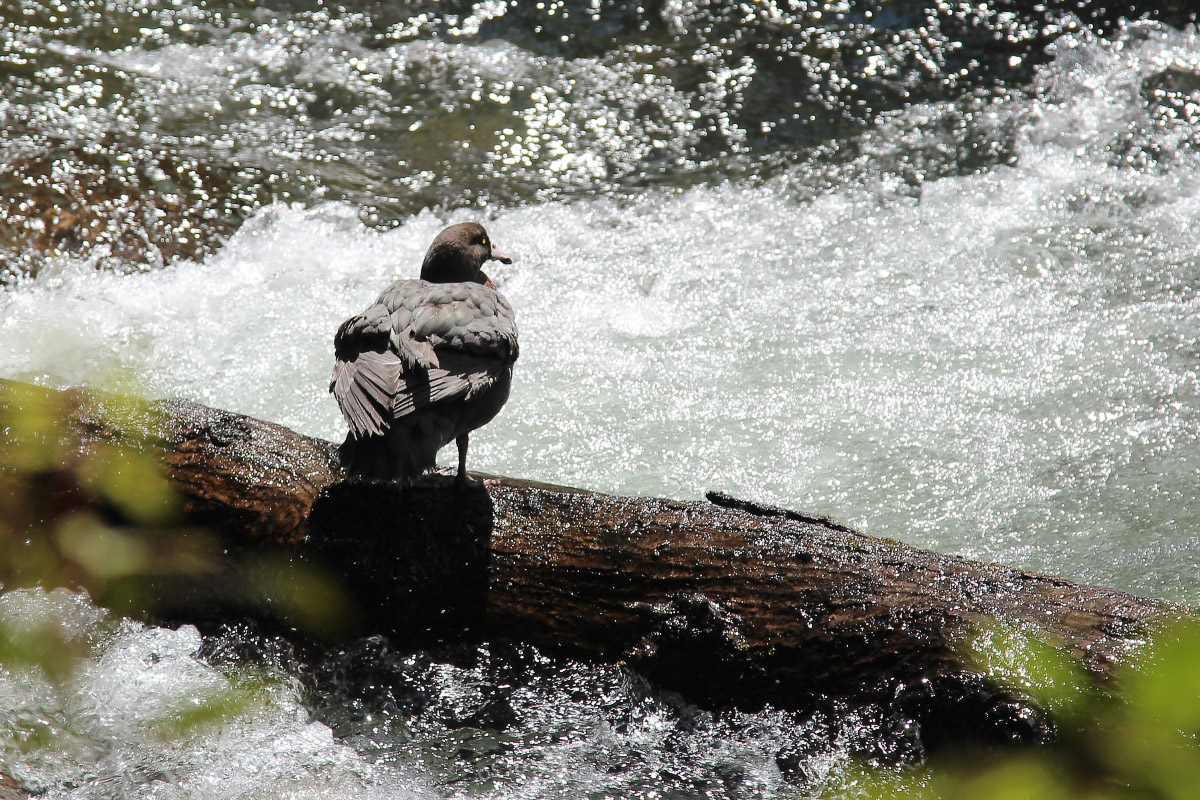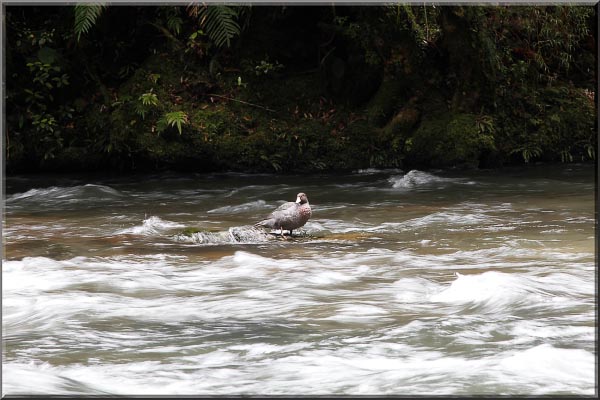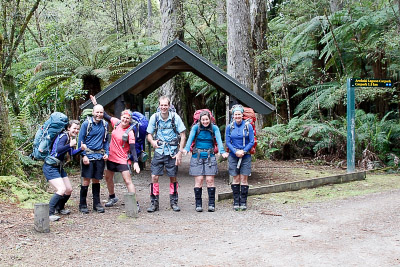
‘Whio, whio’, I could hardly believe it—we had been walking for less than two hours and already my promise of sightings of the nationally vulnerable whio on this trip was coming true. I could see why the circuit we were tramping was called the Te Pua-a-Tāne Circuit—the name itself means the abundance or blossoming of Tāne who is the god of the forest and all the creatures within the forest. As DoC state in their brochure for the circuit, ‘As one of New Zealand’s greatest forests, Whirinaki represents Tāne’s domain in its fullest and most abundant state.’
But I should back up and begin from the start. I spent a year living in Hamilton in 2016/2017 and while I was there I went for a trail run to Rogers Hut in the Whirinaki Forest and loved it so much that I was determined to return there again one day. Fast forward a few years and I was still equally determined to get back there so I decided the big tramp I would organise in November for tramping club would be a five-day tramp in Whirinaki around the 80km Te Pua-a-Tāne Circuit with the big drawcard being the possibility of whio sightings. I had seen a family of whio during my trail run back in 2017 and that family of whio had stayed in my mind for a few year—I was hoping to see more of this amazing bird again aside from on the $10 note!
November rolled around quickly and suddenly we were up in Rotorua and ready to go. On Friday morning we got a shuttle to River Road with Wilhelmina from Blue Tui Shuttles who even had muffins and tea for us before we wandered into the wilderness for five days. I decided to make the logistics easy by simply following the DoC route guide which had us heading in an anti-clockwise direction towards Central Whirinaki Hut for Night 1. This meant we had a nice and cruisy first day when we had heavier packs. Ian walked with us to Whirinaki waterfall—he was staying in the area to do some photography before travelling back to Wellington. Not long after saying goodbye to Ian, Emily spotted our first whio of the day—a pair of whio hanging out in the middle of Whirinaki River (cue, lots of excitement). After spending a long time watching the whio, we thought we probably should start walking again, only to stop again a short while later after seeing more whio including two ducklings. In total we spotted six whio plus two ducklings during the short walk into Central Whirinaki Hut.
In the whio security site there are over 1,800 traps protecting 64 pairs of whio that is supported by Genesis Energy and the Whio Forever Program. These traps also help protect the kiwi, kaka and short-tailed bats that are in Whirinaki. Whio are indicators of a river’s health so the fact that we saw so many of them in the Whirinaki river means it is probably in a pretty healthy state.
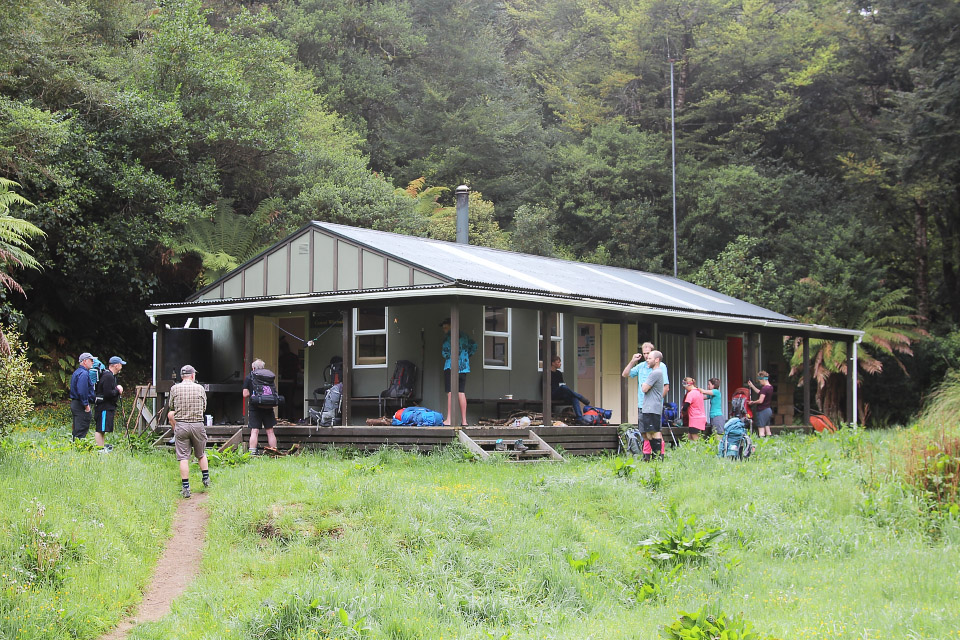
Central Whirinaki Hut was busy that night—there were two groups of trampers who were doing the smaller Central-Mangamate Hut loop, and then a bit later a big group of Duke of Edinburgh students from Hamilton rolled in with their teachers. Much to my horror we overheard them refer to us as the ‘old people’. I think we gave them a memorable night as during cooking of dinner the MSR stove went up in flames, and flames spread onto the bench where fuel had leaked out of it. Maarten bravely stuck his hands into the flames to grab the stove and get it outside before the hut went up in flames too. We found it had leaked fuel due to a missing component and the pump had completely melted. Meanwhile this had caused a lot of excitement for the students who were asking if the stove was about to explode and were going to have quite a tale to tell when they got back to school. I was now starting to wonder if it was me that was causing all this bad luck with MSR stoves as I have now had two trips where they misbehaved – see this trip report for the Leatham Circuit magic.
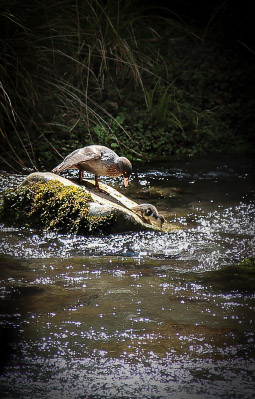
On Saturday (Day 2) we had a longer day. The DoC time was 8-10 hours and after leaving the hut this would be the last time we would see people for the next four days. There were a lot of stream crossings, mud and rock hopping on the Taumutu Stream track to Upper Whirinaki Hut. After Upper Whirinaki Hut I felt like we got a bit further off the beaten path and the bush on this section was beautiful as the track followed the Whirinaki River. The pre-historic bush in this section just felt so untouched and other-worldly. I almost expected to see a Moa just stroll out from behind a tree. DoC had an alert on their website that this section would be slow due to tree fall and we did have some tree fall to clamber over and under as we travelled up the river but we all enjoyed it as it made a nice change from the well graded track on Day 1. I was enjoying listening to the constant chatter of all the birds – kaka, cuckoo, tīeke ….
When we made it to Upper Te Hoe Hut we were greatly amused to see that one tramper who had done the circuit in March had left the following comment about it, ‘I would strongly recommend not doing so unless you think you are superhuman.’ Luckily my group all possessed superhuman strength since they had all made it there and were still smiling. While there was a bit of tree fall to navigate, there were definitely plenty of track markers. We did wonder if some of the people who had written about the lack of trail markers or toughness of the track had perhaps taken the old track. At Upper Whirinaki hut the old track junction sign was still there but there was a notice to say the track had been rerouted to leave from behind Upper Whirinaki Hut instead. Although I just like to think my group all had superhuman strength!
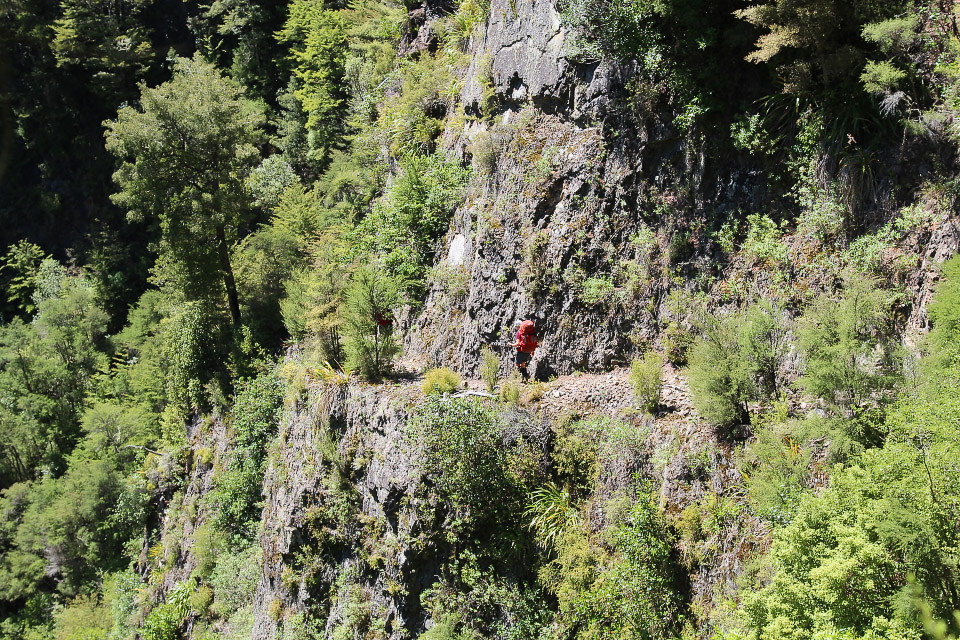
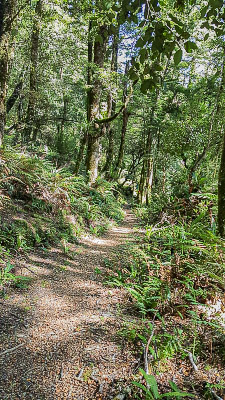
On Sunday (Day 3), we had yet another sunny day to navigate our way down the Te Hoe Bluffs to Central Te Hoe hut for lunch. One group in the intentions book had decided that the bluffs should have epic crash mats under them! A helicopter buzzed by and dropped down to the hut as we were on the bluffs. We made a guess that they were dropping some hunters off because we didn’t find anyone in the hut but saw a big container of food stashed under the bench. Gaining entry into Central Te HoeHut also proved somewhat of a cognitive challenge for me as you had to turn the handle of the door upward to get the door open—that must have been an installation mistake, surely? Aimee lost her pocket knife through the gap in the planks of the hut’s porch so she spent the lunch break using a stick to push it to the edge so she could squeeze her arm through to pick it up. Happily, she got her pocket knife back and her arm.
After Central Te Hoe we were following the river closely again—we got the joy of navigating around large clumps of Ongaonga. We came across a deer exclosure plot—an area DoC have fenced off to keep the deer out so they can study the impact deer have on the regeneration of the native beech forest. The Bull Ring Clearing was a lovely camping spot and even came with a rustic hand-made bench and saw attached. From here it was a steeper climb up some switchbacks and over the saddle interspersed by a nice waterfall. Mangakahika Hut came complete with some trampers’ humour as someone had attached a power switch on the wall of the hut with a sign saying for hair dryers only ….
I went out at dusk to kiwi spot—we had heard kiwi calling and one tramper had written in the hut book that they had seen a kiwi only 4 m in front of the hut. I didn’t have any success unfortunately but one day I hope I will see one in the wild. Meanwhile Aimee lit some candles in the windows of the hut and took her camera out in the dark to practice light painting the hut and got a pretty cool photo.
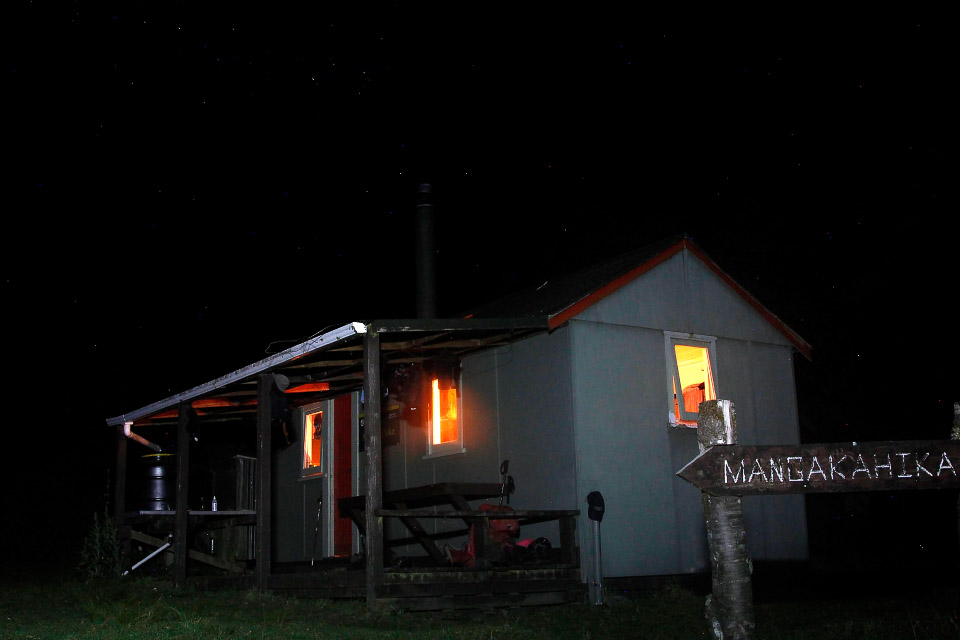
On Monday (Day 4) the sun was out again—I really had been doing a lot of sun dances at work the weeks before the trip. After we wandered along the track to Rogers Hut we lazed around in the sun for a long time, had a very early lunch and did some swimming in the river. In fact, Emily went for a swim in the river when she suddenly found herself swimming with whio. They were floating right at her. She tried to stay as still as possible so not to startle them and they just went swimming by probably thinking she was a rather odd-looking tree. It was a short walk to Moerangi Hut so I decided I wanted to do a bit extra. I sent the rest of the group on and I left my pack at Rogers Hut and did a little trail run with just a daypack to Skips/Whangatawhia Hut before making my way onto Moerangi Hut.
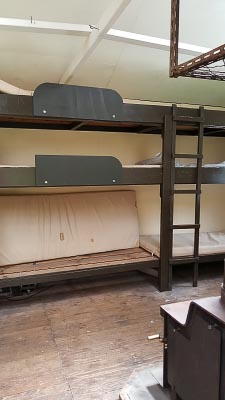
Like a few of the other huts, Moerangi hut had a rather nonsensical bunk set-up. The bottom bunks were normal but the middle and top bunks were designed with very little headroom. As one blog put it, they ‘were almost impossible to get into and out of unless one is very small and agile or fellow trampers can stop laughing long enough to help get a normal sized person into the very limited headroom space allocated.’ Watching Aimee manoeuver herself into the middle bunk was priceless—I thought she was going to stay up there until the morning once she had finally squeezed herself into the bunk and offered to bring her dinner in bed but of course she couldn’t even sit up in bed to eat it so the whole process then started again in reverse with her trying to extract herself. Those bunks should come with warnings!
Moerangi hut was up on a high river terrace and we enjoyed having dinner listening to the call of the whio, kaka, ruru and other birds. We decided to leave the door open that night so we could fall asleep listening to all the birds. Unfortunately, some of us were woken around midnight by lots of rustling. I thought at first that it was Maarten having a midnight snack but it turned out Maarten was actually chasing a giant rat around the hut that was running over all our packs in search of food—luckily, we had hung all our food up. Eventually Maarten managed to chase the giant rat out the door and quickly closed it before the rat could rudely gate-crash back into the hut.
On Tuesday (Day 5) we had a nice easy day back to River Road car park for our 2 pm shuttle. We were now on the Moerangi track which is designed for mountain bikers. At the picnic area just before Moerangi Saddle (955 m) we stopped for a break and were rewarded with views of Mt Tarawera (I had a fab time up there in February when I was lucky enough to get on a volunteer day to pull out wildering pines and got to walk right around the crater). We passed by the spectacular Te Whaiti-Nui-a-Toi Canyon and then were back at the carpark in time to have lunch before our shuttle arrived. With it being lunch on the last day everyone had an interesting combination of food. Emily had a lot of cheese and not many crackers while Aimee had more crackers and no cheese (her second cheese wheel had got wet and had gone mouldy) so a barter system started taking place where Emily traded some cheese for crackers and Megan then traded some dinosaurs for some of Aimee’s sour spiders.
I would highly recommend a tramp in Whirinaki Forest if you want an epic tramp that is all below bushline, cozy huts that aren’t busy and lots of birdlife. It is definitely one of New Zealand’s gems.
Trip stats:
Day 1: River Road to Central Whirinaki Hut
Distance – 18km
Elevation – 476m
Moving time – 4h 40m
Day 2: Central Whirinaki Hut to Upper Te Hoe Hut
Distance – 21.3km
Elevation – 905 m
Moving time – 6h 53m
Day 3: Upper Te Hoe Hut to Mangakahika Hut
Distance – 17.6km
Elevation – 692m
Moving time – 5h 11m
Day 4: Mangakahika Hut to Moerangi Hut
Distance – 18.7km
Elevation – 434m
Moving time – 4h 30m
Sarah’s Solo trip to Skips/Whangatawhia Hut
Distance – 9.3km
Elevation – 308m
Moving time – 1h 10m
Day 5: Moerangi Hut to River Road
Distance – 14.1km
Elevation – 428m
Moving time – 4h 28m.

